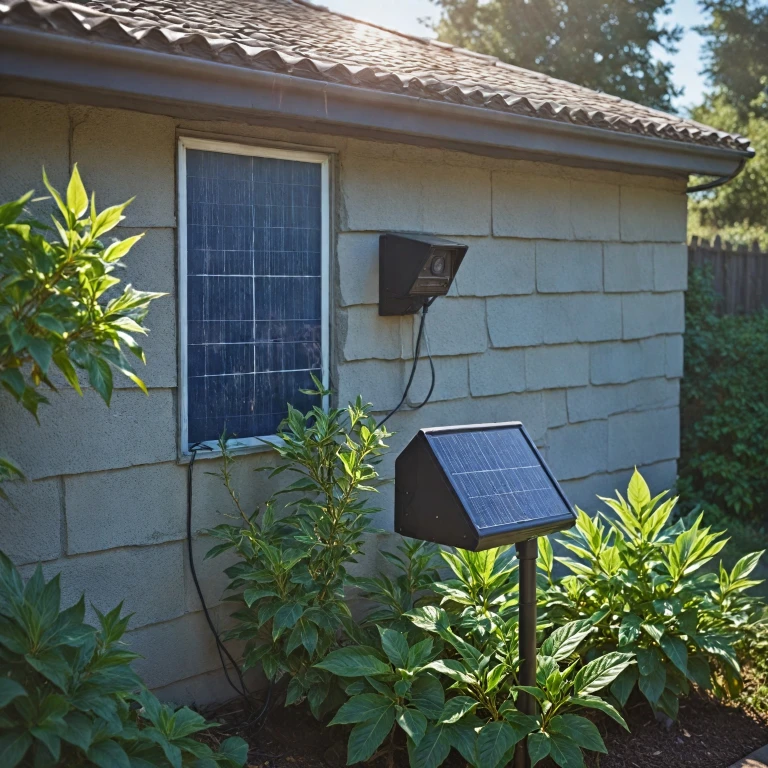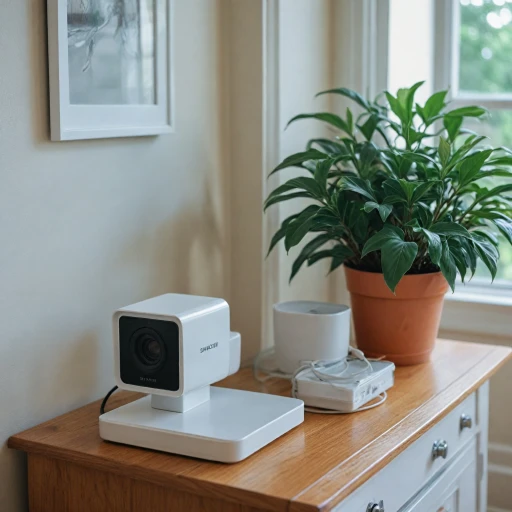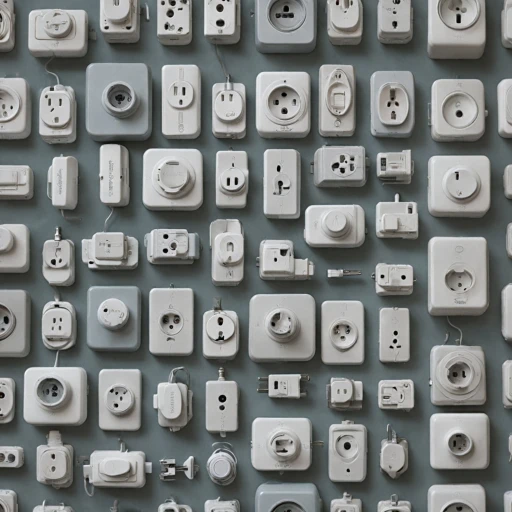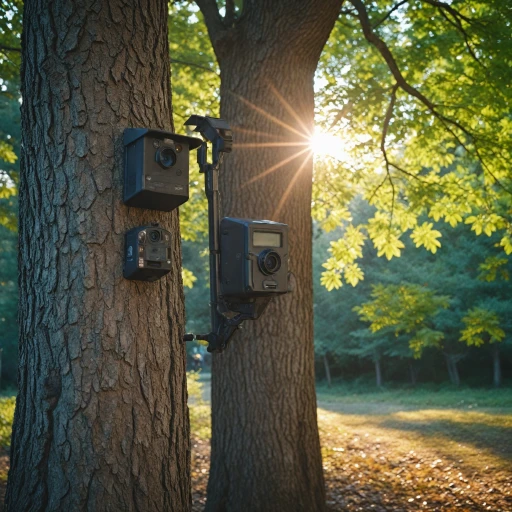Understanding Solar Chargers for Security Cameras
Introduction to Solar Chargers for Home Security Cameras
When it comes to powering your home security cameras, the concept of solar charging can be an attractive, eco-friendly solution. Solar chargers rely on harnessing energy from sunlight using solar panels, which convert solar power into electricity that can then charge your camera's batteries. This method has made it significantly easier to maintain continuous surveillance, reducing the dependency on traditional power sources or frequent battery replacements. The core component of this setup is the solar panel. Depending on the solar charger's quality and the panels' efficiency, a solar charger has the potential to keep your security camera battery charged reliably over time. Many models of solar panels are available, from flexible setups to rigid designs that can fit different mounting requirements. A solar charger setup generally involves connecting the solar panel to the camera via a USB port, enabling a straightforward way to charge the camera battery. However, while solar charging appears beneficial, it's essential to consider where you install the panels to maximize exposure to sunlight. Ideal sunlight conditions will ensure the solar panels generate enough power to keep your camera batteries charged effectively. If you consider using solar charger panels, understanding these basics is crucial. It will help guide you to better decisions regarding which chargers to purchase, how to install panels, and ensuring your cameras function optimally. As you research more about this topic, you'll come across several factors that can impact solar charger efficiency, such as the types of cameras you use and your geographic location, which will further inform your decisions.Benefits of Using Solar Chargers
The Perks of Going Solar with Your Security Cameras
Embracing solar power for your home security cameras offers a myriad of benefits beyond just eco-friendliness. Switching to a solar charger can lead to significant advantages in the efficiency and reliability of your security system.- Cost Efficiency: Although initial investment in solar panels might seem steep, it usually pays off in the long term with reduced electricity bills. Solar charging allows your security system to harness energy from the sun, which is a free and renewable resource.
- Continuous Power Supply: Solar chargers can keep camera batteries fully charged throughout the year, provided they are installed in areas receiving adequate sunlight. This results in a consistent power source and minimizes downtime risk due to power outages.
- Environmental Benefit: Using solar chargers reduces reliance on non-renewable energy sources, which helps decrease your carbon footprint. This is not only beneficial for the environment but can also align with your values and those of your community.
- Remote Locations Covered: Solar power is perfect for security cameras placed in distant or rural locations where traditional power supplies might be challenging or costly to access. Cameras equipped with solar charging capabilities can function effectively without the need for complex wiring or frequent battery changes.
- Flexibility and Portability: Solar panels and chargers offer versatility in terms of installation and relocation. If you're someone who likes changing camera spots or moves frequently, this advantage cannot be overstated.
Challenges and Considerations
Assessing Potential Challenges and Key Considerations
When considering the transition to solar chargers for your home security camera, it's important to weigh certain challenges and considerations. One primary concern is the reliability of solar panels in varied environmental conditions. An overcast or rainy climate can impact the ability of the solar panel to efficiently charge your camera batteries. Thus, it may not be the best sole power source in areas with limited sunlight.
Another factor to consider is the initial cost. While solar chargers can reduce long-term electrical costs, the cost of purchasing and installing solar panels can be significant. However, as technology advances, prices are gradually becoming more affordable, allowing for wider adoption.
There's also the matter of installation. Properly mounting the solar panel is crucial for maximizing exposure to sunlight. Ideally, the panels should be installed at an angle facing south (in the northern hemisphere) to capture the most sunlight throughout the day. An adjustable mount can be advantageous as it allows you to modify angles depending on seasonal changes.
When it comes to compatibility, not every camera can seamlessly pair with a solar charger. Some security cameras require additional accessories, such as a USB charger or specific battery chargers, to ensure proper connectivity and charging. Ensuring that your camera's power input matches the solar charger's output is critical to prevent potential damage or inefficient charging.
It’s worth mentioning that user reviews and field tests give practical insights on how well these systems perform. For instance, some users have shared instances where solar chargers worked great in powering devices like the popular Ring camera. For further enhancements, consider exploring ways to customize your security setup with customizable cam skins to offer added protection against the elements.
Overall, while solar chargers offer a promising eco-friendly solution for powering security cameras, it's essential to thoroughly assess these factors to determine if this alternative will suit your specific needs efficiently.
Compatibility with Different Camera Models
Compatibility Concerns in Pairing Solar Chargers with Your Camera
When considering the integration of solar chargers with your home security camera system, compatibility stands as a key point of contemplation. Not every solar panel or battery charger will seamlessly align with every camera model; therefore, understanding the specifications of both your camera and available solar charging solutions is vital. Battery type plays a significant role in determining which solar charger will suit your camera. Most modern security cameras, like the Ring Camera, are designed to work with specific battery setups. It's important to check if your camera batteries can accommodate solar charging without compromising their efficiency. Using the right solar charger often involves selecting a model that offers a compatible USB port for a direct connect solution, ensuring your camera solar setup remains efficient and hassle-free. The power output specifications—measured in wattage—of the solar panel also dictate compatibility. A solar panel that's well-matched with your cameras requires the ability to provide sufficient power to keep your camera batteries charged. A mismatched solar panel could lead to insufficient charging, which won't deliver the seamless, uninterrupted monitoring homeowners seek. Moreover, ensuring that the mount for the solar panels is compatible with your camera system is another consideration. Panels with adjustable mounts allow flexibility and can be positioned to capture maximum sunlight throughout the day, optimizing the solar power generation for charging your camera battery efficiently. Finally, price can be a limiting factor for some users. While solar chargers can be an investment upfront, their ability to sustainably charge batteries over time can lead to savings on power costs. Evaluate the price in conjunction with the longevity and performance benefits they offer to ensure you make a well-informed decision. Ultimately, aligning a solar charger with your camera is about ensuring the charger will seamlessly charge camera systems you have installed. Gathering replies from views in online communities can offer real-world insights into what works great for others, providing valuable guidance on what solutions may suit your needs best.Installation Tips and Best Practices
Tips for Installing Your Solar-Powered Security Camera
Installing a solar-powered security camera requires careful planning to ensure it works efficiently. Here are some key points to consider:- Location Matters: Position your solar panel where it will receive the most sunlight throughout the day. Roofs, poles, or walls that face south (in the Northern Hemisphere) are generally ideal. Avoid shaded areas to maximize solar charging.
- Secure Mounting: Use sturdy mounts to affix both the camera and solar panel securely. This prevents damage from wind or accidental knocks and ensures the panel remains optimally aligned with the sun.
- Angle Adjustment: Adjust the panel's angle seasonally to maintain optimal exposure to the sun’s rays. Many solar panels come with adjustable mounts to facilitate this.
- Cable Management: Ensure that cables connecting the solar panel to the camera or battery are neatly organized and protected. This minimizes the risk of wear and tearing, which may affect charging efficiency.
- Optimal Panel Size: Choose a solar panel size that matches your energy needs, taking into account the camera's power consumption and battery capacity. Larger panels can provide more consistent charge over low-sunlight periods.
Real-World Examples and Case Studies
Real-Life Adoption of Solar Chargers in Home Security
When considering the adoption of solar chargers for powering home security cameras, many users have shared their experiences regarding real-world application. These insights can offer valuable lessons on how well solar panels integrate with security systems, as well as provide guidance on overcoming potential challenges.
One commonly cited advantage of using a solar charger is its ability to maintain a steady power supply, even when traditional power sources are unavailable. For instance, in areas prone to outages or remote locations without reliable electricity, deploying solar panels can ensure that camera batteries remain charged consistently, thereby enhancing overall security.
Many users have also expressed satisfaction with solar-powered solutions for their ring cameras, stating that the ability to continuously charge the camera battery through a solar panel alleviates concerns about frequent re-charging. A user reported that their ring camera, equipped with a solar power option, "works great" even in less sunny environments, as solar panels nowadays are designed to be highly efficient.
The integration of these solar solutions requires careful consideration of several factors: positioning for optimal sunlight, compatibility with existing camera models, and the quality of the battery charger. Users often highlight the importance of professional installation, or at least a thorough understanding of installation guides, to avoid potential issues with mounting and wiring setups.
Moreover, the choice of solar charger brand and model can influence longevity and efficiency. Reviews and community forums provide a wealth of information with replies and views offering a collective opinion on what works best in different circumstances.
In summary, utilizing solar charging systems for home security cameras can be highly beneficial, provided that users integrate them thoughtfully, considering the unique demands and conditions of their environments.






